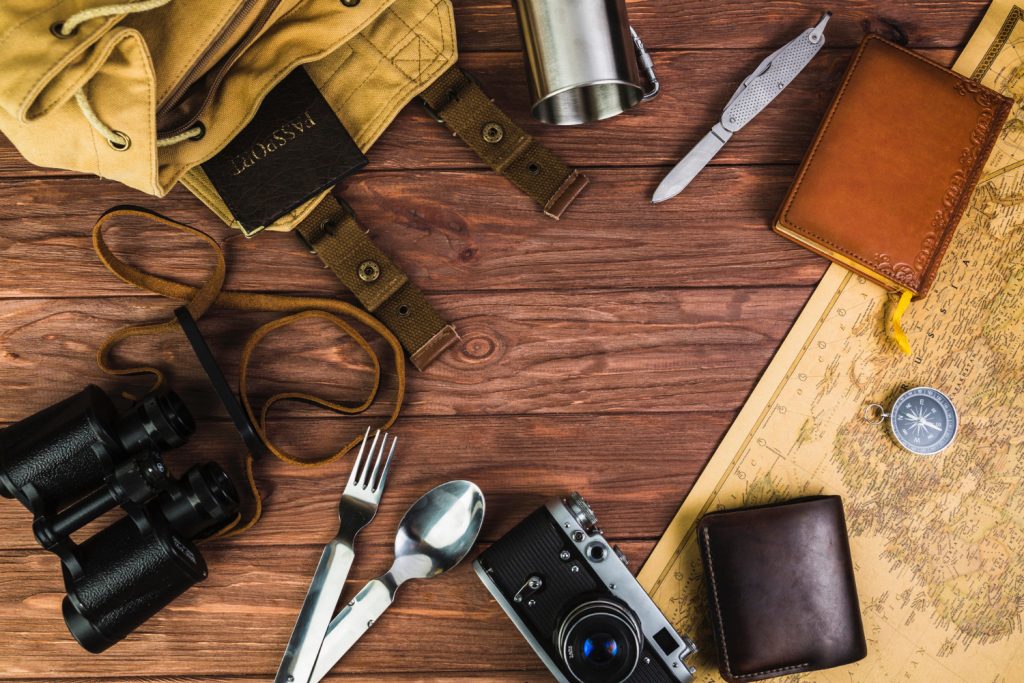If you’re about to start your first backpacking adventure—or you’re heading out on a long-term journey and wondering what to bring on a backpacking trip—this guide covers all the essentials. It’s based on my own experience. These are not hard rules but practical suggestions that have worked for me over time. Everyone travels differently. Some chase beaches, others dive into history or nightlife. The key is to tailor the trip to your style while staying prepared.
This backpacking list is designed for long-term travel and includes everything from gear and clothing to small items people often forget. Whether you’re traveling for weeks or months, this checklist will help you stay organized, pack smart, and avoid overthinking. Get ready to hit the road confidently!
Backpacking List

Here’s a solid list of what to bring on a backpacking trip. It’s not exhaustive and many items can be purchased locally during your trip, but they are what I consider essential:
I do not earn commissions from any links in this article. I include these links just as a reference to give you an idea of the products I used over time. Some items might not be available anymore but you can find alternatives or newer models.
- Two backpacks: I always bring a main backpack and a smaller daypack. Some hate carrying two bags and I can relate; I quickly learned that travelling light is essential. However, if you bring a laptop, camera, and so on, I find it practical. Your daypack goes on your chest when in transit; your big one on your back. Keep valuables in the daypack, both when traveling and while out exploring. Everything else goes in the large pack. Another option is to have a small daypack that can fit inside the main backpack while in transit and only take it out when exploring.
- Money belt: A money belt is super important. Don’t walk around with your passport and cash in your pockets or regular bag.
- Two wallets: One for daily use (credit card + 1 ID) and one to leave in the hostel (debit card + backup ID).
- Pen + paper: Always useful on the plane or at borders for forms. A small notebook or scrap paper can come in handy.
- Padlock: Needed to lock hostel lockers. Don’t bring one too big—it might not fit. Also useful to lock your daypack if it allows it.
- Multitool: Get a multitool with scissors, pliers, and decent blades. You’ll use it more than you think. However, make sure to leave it in the main backpack to avoid problems at the airport.
- Fork and spoon: Simple metal fork and spoon for eating while traveling.
- Can opener: Cheap canned food on the go? Worth having one around.
- External batteries: Must-have. Get one or two external batteries with high mAh so you can charge your phone when you’re out all day.
- Water bottle: A durable 1L bottle is essential. Hydration always matters. I also always carry a larger bottle of clean water in my main backpack as a backup which I use to refill my water bottle in case I run out.
- Sunscreen & bug repellent: Obvious but important. Insect repellent with DEET is better in regions with disease-carrying mosquitoes.
- Rain jacket: Keep it in your daypack—weather can turn fast.
- Sunglasses: Self-explanatory.
- Hat: Get a hat that breathes and protects well from the sun. Choose one without visible logos or luxury brand labels.
- Watch: A cheap one with an alarm and a light is enough. You won’t always want to check your phone.
- Microfiber towel: Some hostels charge for towels. Microfiber towels dry quickly and take up little space.
- Waterproof battery case: A battery case is good for charging your phone when it rains or if you’re around water. Just note you’ll need a headphone adapter if you’re using wired headphones.
- Waterproof pouch: A waterproof pouch will protect your phone or valuables at the beach or near water. Floatable ones are ideal.
- Travel adapter + converter: Depending on where you’re from and where you’re going, a universal adapter/converter might be non-negotiable.
- Plastic storage containers and bags: Plastic containers save money if you cook and store your own food. A majority of hostels have refrigerators and freezers. Plastic bags are also good for keeping documents, electronics, or money dry.
- Good walking shoes: Invest in comfort. You’ll walk a lot. I personally use Blundstones and love them, but pick what works for you.
- Chargers, cables, headphones: Bring all the cables you need for your phone, camera, laptop, etc. And a backup charger if possible.
- Clothing: Bring what makes sense, but here’s what I always pack:
- Plenty of underwear
- Merino wool socks (helps prevent blisters)
- Dry-fit t-shirts and tank tops
- Shorts and long pants
- Swimsuit
- Coat (ideally compressible)
- Tuque (or beanie)
- Flip flops (for showers or walking around hostels)
That should cover most of what to bring on a backpacking trip. Everyone travels differently, but with this setup, you’ll be prepared for just about anything. Finally, you’ll find more helpful articles like this one in the Travel Tips section of the website.
Safe travels!


